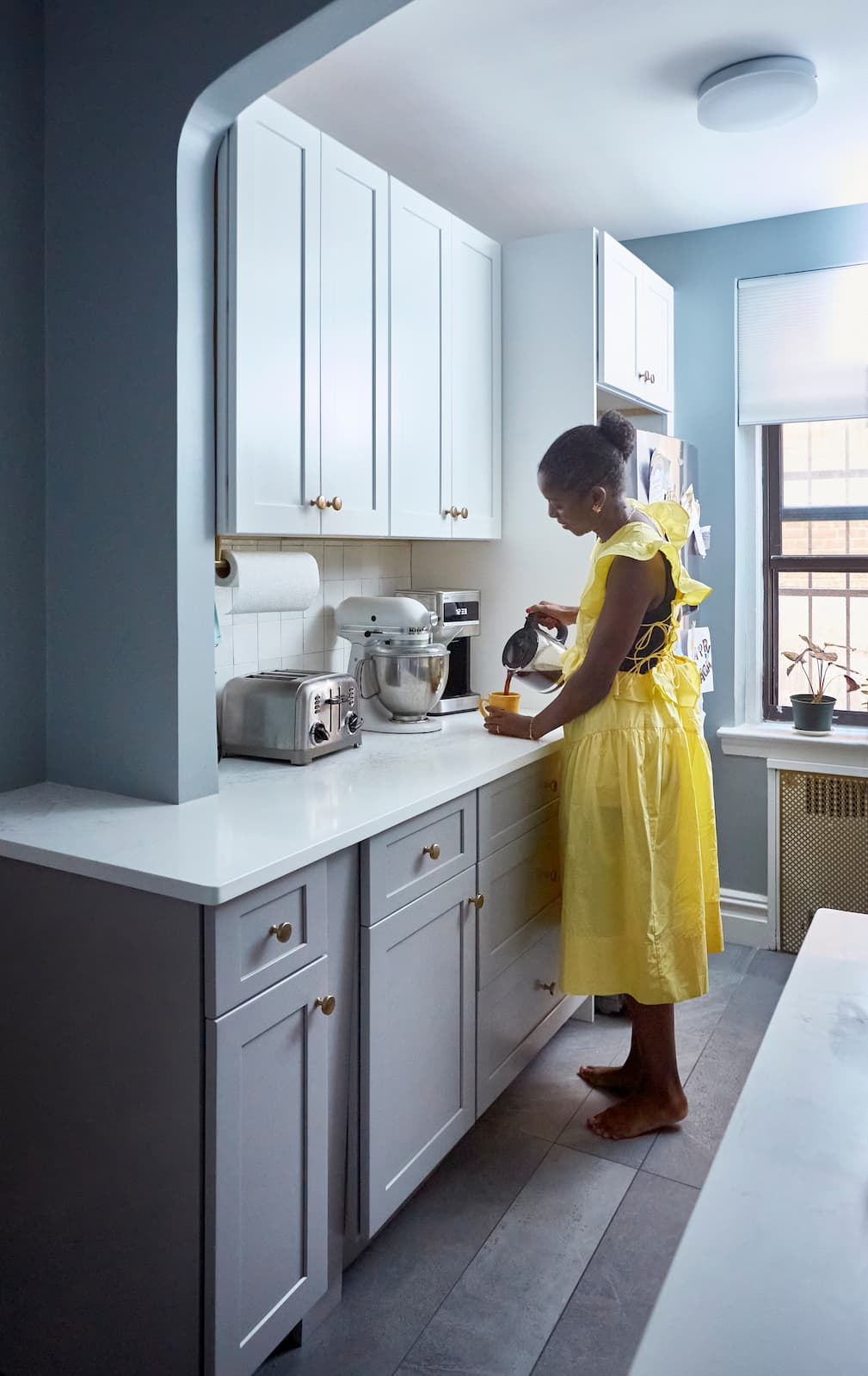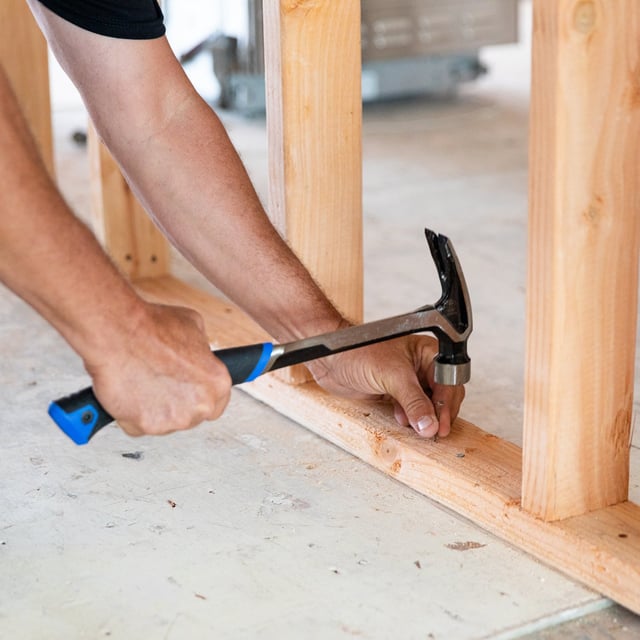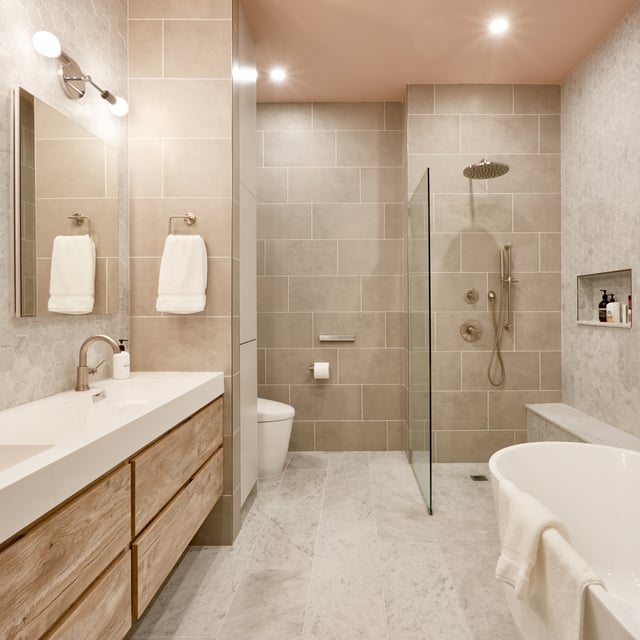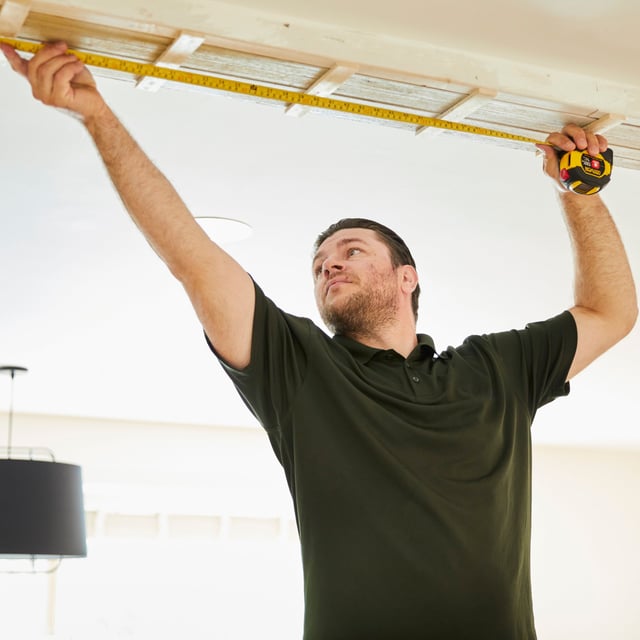Securing the right financing is essential when you dream of transforming your house into the home you’ve always envisioned in 2025. Whether planning a complete remodel or minor updates, finding the right financing for your home renovation can be daunting. The key is understanding the various options available, including home renovation loans and refinancing options, each with its own benefits and limitations. This guide will walk you through the types of loans and refinancing options available, who can benefit from them, how to apply, and which projects are best for financing.
What are home renovation loans?
Home renovation loans are a specific type of financing designed for homeowners who want to improve their homes. These loans provide the capital to fund everything from minor repairs to major remodeling projects. Unlike traditional personal loans, renovation loans are often secured by your home's value, making them more favorable for larger projects. Depending on the loan type, you may need to have built-up home equity or meet certain credit and income requirements.
Types of home renovation loans
There are several types of home renovation loans, each suited to different project sizes, homeowner needs, and financial situations. The most common options include:
- Personal loans: Personal loans for home renovations are typically unsecured loans that don't require collateral, making them a popular choice for smaller projects or homeowners who prefer quick approval processes. With personal loans, the approval process is often faster than other financing options, but the trade-off is usually a higher interest rate. These loans may be perfect for smaller renovations like kitchen or bathroom updates, but they may not be ideal for large-scale remodels due to higher costs associated with borrowing limits and interest rates. A typical personal loan for home renovations ranges from $5,000 to $100,000, depending on your credit score and income.
- Home equity loans: A home equity loan is a type of loan where you borrow against the equity you've built in your home. Home equity loans are often called "second mortgages" because they involve taking out a loan in addition to your existing mortgage. They offer a lump sum of money upfront and usually come with fixed interest rates, making them a great option for large renovation projects like an addition to your home or a complete kitchen remodel. The interest rates on home equity loans are generally lower than those for personal loans because your home secures the loan. Still, you need substantial home equity to qualify—typically at least 15% to 20%.
- Home Equity Line of Credit (HELOC): A HELOC is another form of borrowing against your home equity, but instead of receiving a lump sum, you're given a line of credit that you can draw from as needed. It works similarly to a credit card, where you can borrow and repay over time during a specified draw period. HELOCs typically come with variable interest rates, meaning the amount you pay in interest can fluctuate over time. This makes them more unpredictable than home equity loans, but they're ideal for ongoing or phased renovation projects, such as updating different parts of your home over time. The flexibility of a HELOC also makes it a popular choice for homeowners who may not know the full extent of their renovation costs upfront.
- FHA 203(k) loans For those looking to buy a home that needs significant repairs, FHA 203(k) loans provide an all-in-one solution by combining the purchase price and renovation costs into one loan. The Federal Housing Administration backs this loan, and it is available to buyers purchasing a fixer-upper or current homeowners looking to refinance and make substantial renovations. FHA 203(k) loans are divided into two categories: Standard 203(k) loans for major projects and Limited 203(k) loans for smaller repairs. These loans have stricter guidelines regarding the types of renovations allowed, but they are an excellent option for first-time homebuyers or those with lower credit scores, as the FHA guarantees the loan.
- Cash-out refinance A cash-out refinance is a type of refinancing where you replace your current mortgage with a new one for more than you currently owe, allowing you to withdraw the difference in cash to finance your renovation project. This option is popular among homeowners with significant home equity who want to take advantage of lower interest rates. The cash-out refinance option can be attractive because it rolls your renovation costs into your mortgage, often at a lower interest rate than personal loans or credit cards. However, the downside is that you're increasing the total debt tied to your home, potentially extending the loan term and raising monthly payments.
- VA renovation loans Veterans and active-duty military members may be eligible for VA renovation loans, which allow them to refinance their existing VA loan or buy a new home while financing necessary renovations. The benefits of VA loans include no down payment and no private mortgage insurance (PMI), but the loan amount is often capped, meaning it may not cover very expensive renovations.
Pros & cons of home renovation loans
Like any financial product, home renovation loans come with advantages and disadvantages. The right loan for you will depend on your financial situation, renovation scope, and long-term goals.
Pros:
- Access to funds: Home renovation loans provide immediate access to cash, allowing you to start your project without waiting to save the entire amount.
- Boost home value: Renovations can significantly increase your home’s market value, especially when making high-ROI improvements like kitchen or bathroom upgrades.
- Fixed interest rates: Many renovation loans, like home equity loans, offer fixed interest rates, making it easier to budget for your renovation without worrying about fluctuating payments.
- Tax benefits: In some cases, the interest paid on home renovation loans may be tax-deductible, particularly for loans tied to your home equity.
Cons:
- Risk of over-borrowing: It's easy to borrow more than you need, especially if low interest rates or promotional offers entice you. This can lead to higher debt and monthly payments than initially anticipated.
- Collateral risk: Your home is used as collateral for home equity loans and HELOCs. If you default on the loan, you could face foreclosure.
- Variable rates: HELOCs and some personal loans have variable interest rates, meaning your payments could increase if rates rise.
- Loan fees: Many renovation loans come with origination fees, closing costs, and other charges that add to the total cost of your project.
Who can benefit from home renovation loans?
Home renovation loans are best suited for homeowners committed to improving their property but may not have sufficient savings. Homebuyers purchasing homes that need repairs can also benefit from renovation loans, especially FHA 203(k) loans. If you plan to sell your home soon, these loans can help you make necessary improvements to maximize your resale value. Additionally, renovation loans are a good option for homeowners who want to invest in energy-efficient upgrades, which may lower utility bills and increase the home's appeal to future buyers.
Understanding refinancing for home renovations
Refinancing can be an excellent option for homeowners who want to lower their mortgage interest rates, adjust their loan terms, or access equity for renovations. By refinancing, you can replace your existing mortgage with a new one, which may have better terms or provide you with the cash needed for your home improvements.
What is Home Refinancing for a Renovation?
Home refinancing for a renovation is when a homeowner restructures their existing mortgage to access funds for renovations. This typically involves either taking out a new loan for a larger amount than your current mortgage or adjusting the loan’s interest rate or term to lower your monthly payments, freeing up money for renovations. The most common form of refinancing for renovations is a cash-out refinance, where you borrow against the equity in your home and use the excess funds for home improvements.
Alternatively, a rate-and-term refinance allows you to reduce your mortgage payments, freeing up cash flow for renovations without taking on additional debt.
Types of refinancing for home renovations
- Rate-and-term refinance: With a rate-and-term refinance, you replace your current mortgage with a new one that offers a lower interest rate or a longer term, reducing your monthly payments. Although this type of refinancing doesn't provide extra cash upfront, the savings from lower payments can be used to fund smaller renovations. This is an attractive option for homeowners who don't want to increase their mortgage balance but need more breathing room in their monthly budget.
- Cash-out refinance: In a cash-out refinance, you take out a new mortgage for more than the current balance on your home. The difference between your old mortgage and the new mortgage is paid out to you in cash, which can be used for renovations. This type of refinancing is best for homeowners who have significant equity built up in their homes and want to use that equity to fund major home improvements. However, it increases your total mortgage debt and may extend the repayment period.
- FHA streamline refinance: If you have an FHA loan, you may qualify for an FHA streamline refinance, simplifying the refinancing process by reducing the documentation and appraisal requirements. While it doesn't provide cash for renovations, it can lower your interest rate or adjust your loan terms, freeing up cash for home improvements.
Pros and cons of refinancing
Pros:
- Lower monthly payments: Refinancing at a lower interest rate or extending your loan term can reduce your monthly payments, providing more cash flow for home renovations.
- Access to cash: With a cash-out refinance, you can tap into your home's equity to finance major home improvements.
- Tax deductions: Depending on how you use the refinanced funds, the interest on your mortgage may still be tax-deductible.
Cons:
- Closing costs: Refinancing comes with costs, such as appraisal fees, title insurance, and other closing expenses, which can add up to several thousand dollars.
- Extended loan term: Refinancing often extends the length of your mortgage, meaning you'll be paying off your home for longer. This can increase the total interest paid over the life of the loan.
- Increased debt: With a cash-out refinance, you're taking on more debt by borrowing against your home equity. This increases the risk of foreclosure if you're unable to make payments.
When should you consider refinancing for renovations?
Refinancing can be a smart choice under the right circumstances. If interest rates have dropped significantly since you first took out your mortgage, or if you have accumulated substantial equity in your home, refinancing can help you access funds for renovations at a lower cost.
Additionally, refinancing can leverage your home’s equity to finance the project if you’re planning major renovations that will boost your home's value, such as adding square footage or upgrading key areas like the kitchen or bathrooms. However, refinancing is not recommended if you plan to sell your home soon or if the costs outweigh the benefits.
Qualifying for a home renovation loan or refinance
Whether you're applying for a home renovation loan or refinancing your mortgage to fund renovations, lenders will evaluate several key factors to determine your eligibility. Preparing your finances and understanding what lenders look for can improve your chances of approval.
Eligibility criteria for home renovation loans
When applying for a home renovation loan, the primary criteria lenders evaluate include:
- Credit score: Your credit score significantly determines whether you qualify for a renovation loan and what interest rate you'll receive. Most lenders require a minimum credit score 620, though higher scores will generally secure better terms. Some government-backed loans, like FHA 203(k), may accept lower credit scores.
- Income: Lenders want to ensure you have sufficient income to repay the loan. You'll be required to provide proof of income through pay stubs, tax returns, or bank statements. Self-employed applicants may need to provide additional documentation to verify income.
- Home equity: For secured loans, like home equity loans and HELOCs, your home's equity will determine how much you can borrow. Generally, lenders require at least 15% to 20% equity in your home to qualify.
- Debt-to-Income (DTI) ratio: Lenders will also assess your debt-to-income ratio, which compares your monthly debt payments to your monthly income. A DTI ratio of 43% or lower is generally required, though some lenders may accept higher ratios with compensating factors like a strong credit score or significant equity.
Eligibility criteria for refinancing
Refinancing eligibility is similar to that for home renovation loans, with a few key differences:
- Credit score: Like renovation loans, a strong credit score is essential for refinancing. Most lenders require a credit score of at least 620 for conventional refinancing, though FHA streamline refinancing may have more lenient requirements.
- Home equity: You’ll need sufficient home equity to refinance, especially for a cash-out refinance. Lenders typically require at least 20% equity for cash-out refinancing, though some may allow for lower amounts under certain conditions.
- Employment history: Lenders prefer borrowers with a stable employment history. If you’ve recently switched jobs or your income has fluctuated, qualifying for refinancing may be more challenging.
- Appraisal: When refinancing, lenders often require a new appraisal to determine the current market value of your home. If your home has appreciated significantly, you can refinance for more than you owe, providing access to cash for renovations.
How to improve your chances of approval
If you're concerned about meeting the eligibility criteria for a renovation loan or refinancing, there are steps you can take to improve your chances of approval:
- Improve your credit score: Focus on paying down existing debt, making all your payments on time, and avoiding new credit inquiries in the months leading up to your application.
- Increase your home's equity: Consider making extra mortgage payments to build equity in your home before applying for a loan or refinance.
- Reduce your debt: Pay down other debts to lower your debt-to-income ratio, making you a more attractive borrower to lenders.
- Provide detailed documentation: Be prepared to show detailed financial records, including income statements, tax returns, and bank statements, to support your loan or refinance application.
How to apply for a home renovation loan or refinance
Applying for a home renovation loan or refinancing involves several steps, from gathering documentation to shopping for the best rates. Here's how the process works:
Process for home renovation loans
- Determine your loan amount: Start by estimating the total cost of your renovation project. Consult with contractors, gather quotes, and create a detailed budget for your project. This will help you determine how much financing you need.
- Compare lenders: Research different lenders to find the best loan terms for your situation. Compare interest rates, fees, and repayment terms to ensure you get a deal that works for your budget.
- Submit your application: Once you've chosen a lender, submit your loan application and any required documentation, such as proof of income, credit history, and details about the renovation project.
- Get pre-approved: Many lenders offer pre-approval, which gives you an idea of how much you can borrow and at what rate. This can help you confidently move forward, knowing your financing is in place before you start your renovation.
- Complete the loan process: After your loan is approved, you’ll need to sign loan documents and finalize the terms of your loan. Once this is complete, you’ll receive the funds to begin your renovation project.
Process for refinancing
- Evaluate your existing mortgage: Start by reviewing the terms of your current mortgage, including your interest rate, remaining balance, and loan term. This will help you determine whether refinancing makes financial sense.
- Check your credit score: Before applying for refinancing, check your credit score to ensure it meets the lender's requirements. If your score needs improvement, take steps to boost it before applying.
- Shop for lenders: Compare offers from multiple lenders to find the best refinancing terms. Pay attention to interest rates, closing costs, and any prepayment penalties that may apply.
- Submit your application: Once you’ve selected a lender, submit your refinancing application and the necessary documentation, such as proof of income, home equity, and credit history.
- Close on the loan: After your refinancing application is approved, you’ll close on the new loan. This process involves signing documents, paying closing costs, and beginning payments on your new loan terms.
Costs and fees involved in home renovation loans & refinancing
Understanding the costs associated with home renovation loans and refinancing is crucial for budgeting and ensuring you don't overextend your finances.
Loan costs
Home renovation loans come with various costs, including:
- Origination fees: Lenders typically charge a fee to process your loan, ranging from 1% to 6% of the total loan amount. This fee covers administrative costs and is often rolled into the loan balance.
- Interest rates: The interest rate on your renovation loan will depend on your credit score, loan type, and the lender. Unsecured personal loans often have higher rates than secured loans like home equity loans or HELOCs.
- Closing costs: For secured loans like home equity loans, closing costs can range from 2% to 5% of the loan amount. These fees cover expenses such as appraisals, title searches, and legal documentation.
- Prepayment penalties: Some loans have prepayment penalties and fees if you pay off your loan early. Check whether this applies to your loan before signing the agreement.
Refinancing costs
Refinancing comes with its own set of costs, including:
- Closing costs: Similar to home renovation loans, refinancing involves closing costs ranging from 2% to 5% of the loan amount. These costs include appraisal fees, title insurance, and other legal expenses.
- Prepayment penalties: If your existing mortgage has a prepayment penalty, you may need to pay this fee when refinancing. Be sure to check the terms of your current mortgage before moving forward.
- Appraisal fees: Lenders typically require an appraisal of your home’s value before approving a refinance. Appraisal fees can range from $300 to $500, depending on the size and location of your home.
- Points: Some lenders offer the option to pay points (a percentage of the loan amount) upfront to lower your interest rate. While this can save money in the long run, it adds to the initial cost of refinancing.
How to minimize costs
If you're concerned about the costs associated with home renovation loans or refinancing, here are some tips for minimizing expenses:
- Negotiate fees: Many lenders are willing to negotiate certain fees, such as origination or closing costs. Don't hesitate to ask for a reduction, especially if you have a strong credit history.
- Shop around: Comparing offers from multiple lenders can help you find the best deal and avoid unnecessary fees. Look for lenders who offer no-closing-cost loans or who are willing to waive certain fees.
- Consider a HELOC: If you only need a small amount of money for your renovation, a HELOC may be more cost-effective than a home equity loan or refinancing. With a HELOC, you only pay interest on the amount you borrow, making it more affordable for smaller projects.
Renovation projects best suited for financing
Not all renovation projects are created equal when it comes to financing. Some renovations offer a higher return on investment (ROI) and are more likely to increase your home’s value, while others may not be worth the cost of borrowing.
Projects that increase home value
- Kitchen remodels: A kitchen remodel is among the most popular and highest-ROI renovation projects. Updating cabinets, countertops, appliances, and flooring can make your kitchen more functional and attractive, often adding significant value to your home.
- Bathroom renovations: Like kitchens, bathrooms are key areas that can boost your home's resale value. Replacing old fixtures, updating tile, and adding modern amenities like a walk-in shower or double vanity can significantly impact the process.
- Basement finishing: Turning an unfinished basement into livable square footage adds value to your home by increasing the overall usable space. Whether you create a home theater, an additional bedroom, or a recreational area, a finished basement can offer a good return on investment.
- Attic conversions: Converting an attic into a bedroom or office space is another renovation that can add value to your home. Attic conversions are often less expensive than building an addition, yet they provide similar benefits regarding increased square footage and functionality.
- Energy-efficient upgrades: Installing energy-efficient windows, doors, and insulation can reduce your home's energy costs while increasing its value. Many buyers will pay more for homes with energy-efficient features, making these upgrades a smart investment.
Green home improvements
Green home improvements, such as installing solar panels, upgrading to energy-efficient HVAC systems, or adding smart thermostats, can reduce energy consumption and utility bills. In addition to the cost savings, eco-friendly renovations can make your home more attractive to buyers. Some lenders offer specific green renovation loans designed to fund environmentally friendly projects. These loans often come with lower interest rates and favorable terms to encourage homeowners to invest in sustainable upgrades.
What projects typically don’t qualify
While most home renovation loans cover a wide range of projects, some types of renovations typically don't qualify for financing:
- Luxury upgrades: High-end, non-essential upgrades like installing a home theater, hot tub, or swimming pool may not qualify for traditional renovation loans. These projects don’t usually increase your home's value enough to justify the cost, making them less attractive to lenders.
- DIY projects: Some lenders require that renovations be completed by licensed contractors, meaning that DIY projects may not qualify for financing. If you plan to tackle the project, check the lender's requirements before applying for a loan.
- Rental properties: While you may be able to take out a loan to renovate a rental property, the terms are often stricter, and the interest rates may be higher. Many renovation loans are designed for primary residences, so if you plan to renovate an investment property, you may need to explore alternative financing options.

Written by
Jordi Lippe-McGraw
Jordi Lippe-McGraw
Jordi Lippe-McGraw is a writer who covers travel, lifestyle, and other topics with bylines in Condé Nast Traveler, Travel + Leisure, the New York Times, Departures, Architectural Digest, and more.













